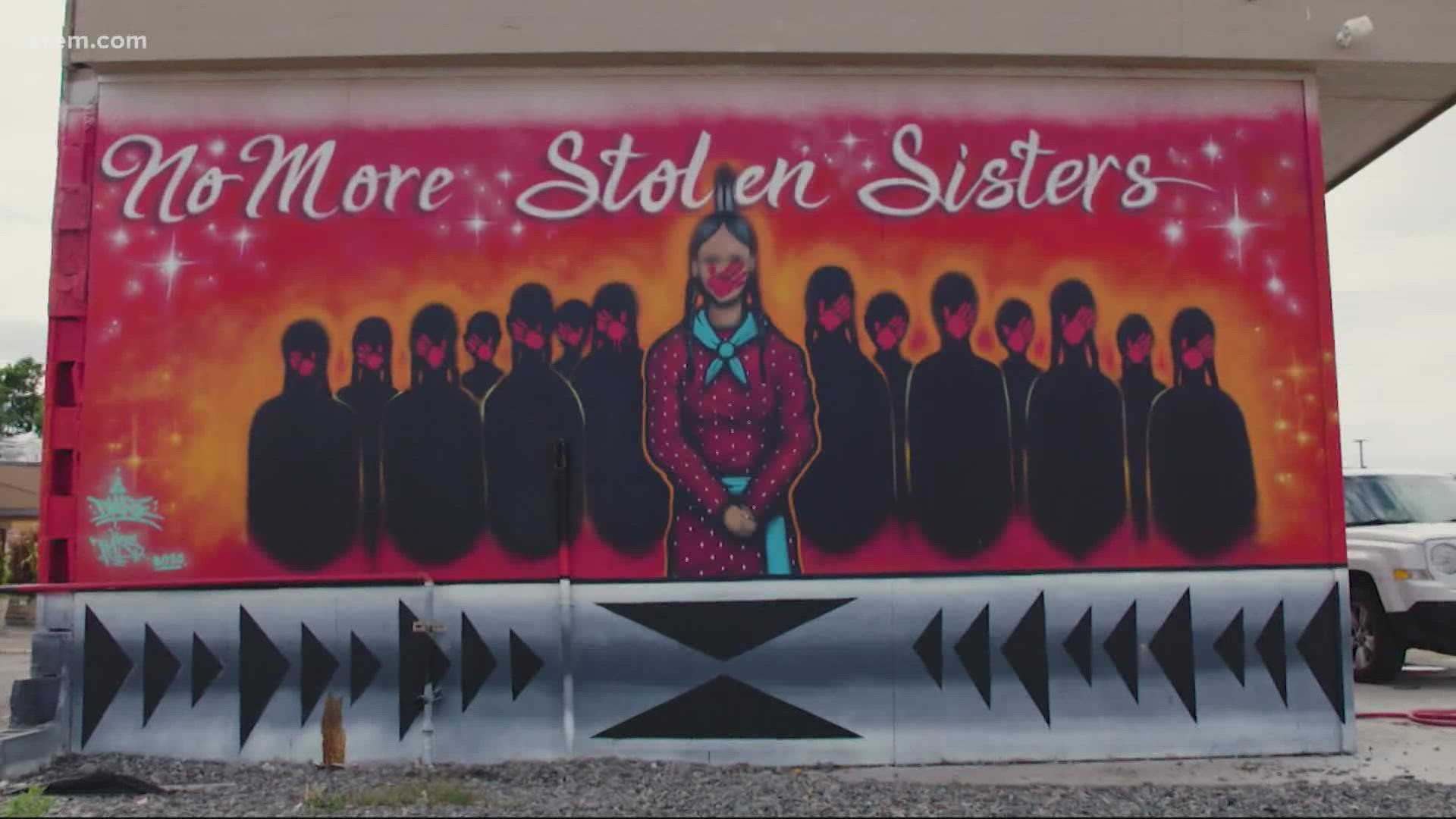SPOKANE, Wash. — The disappearance and death of Gabby Petito has led to a nationwide outcry, over the lack of publicity when women of color go missing, especially indigenous women.
Jenny Slagle, Spokane Public School board member and community activist, says that it's time that more people start recognizing that this is a nationwide issue.
"It's time to pay attention to the fact that Native American women are more susceptible and more at risk of going missing," Slagle said.
Sadly, Slagle knows firsthand just how devastating it can be when a family member goes missing or is murdered.
"In August of 2011, my sister Felicia was murdered in the city of Yakima by her abusive boyfriend," Slagle said. "Then in 2013, my sister Angela, went missing. And it took several days for law enforcement to respond to the situation. And two weeks later, she was found in a ditch that was close to her previous boyfriends, rural home."
According to the Bureau of Justice Statistics, over half of Indigenous women will experience physical and/or sexual violence at some point in their lives. Washington is one of the leading states for Indigenous women to go missing and be murdered.
"One of the main issues is as the Urban Indian Health Institute's report in 2018 called out, was that native women often go missing three times in life, in media and in data," Slagle said.
As of Sept. 20, there are more than 100 missing Indigenous people in Washington. Dawn Pullin, the Tribal liaison with the Washington State Patrol says it's a problem that effects both women and men.
"We are noticing, looking at database that it's equal amongst men and women, so men and women go missing at the same rate," Pullin said.
The Tribal Liaison program stated in 2019 with the goal of increasing the trust between Native communities and law enforcement. Now there are two liaisons, one for Western Washington and one for Eastern Washington.
Once a person goes missing and the family then reports it to police, officers then are supposed to share the information with the National Crime Information Center. The Washington State Patrol Tribal Liaisons then look at this data and try to find any trends.
“So if law enforcement in Spokane or Seattle, you know, wherever, input that missing person into the national database, that's where we pull our information,” Pullin said. “So, you've got two people, part of our job is to look at data, which I'm not sure if anybody was really looking at that as intensely as we are.”
The Washington Attorney General’s office is also creating a task force as an additional resource to help solve these cases. Slagle says, the more resources that can help Indigenous families who are missing a loved one, the better.
“Speaking from experience as a family who had to deal with law enforcement as we were experiencing, experiencing our loss and trauma was just being approached in it in as much of a culturally responsive and respectful way, recognizing that there are cultural differences in the way that native families just really need more information on how the systems work,” she said.
Slagle says she hopes that in addition to the state resources, that the city of Spokane will also put together a task force to
“The city of Spokane also has a memorandum of understanding with the urban Indian community that it needs to be updated,” Slagle said. “And we need to hold them to the MOU, which includes creating a tribal liaison and hopefully some type of local task force to work to tie into the regional work and the statewide work that's happening.”
There are also several grassroots organizations that are working to provide resources to families of missing and murdered indigenous women such as Endtheviolencespokane.org, juustwa.org, and womenspirit.net.
“I think bringing awareness to the crisis is going to help create other people looking at the crisis,” Pullin, one of the Washington State Patrol Tribal Liaisons said. “Maybe we can figure that out together as a community.”

